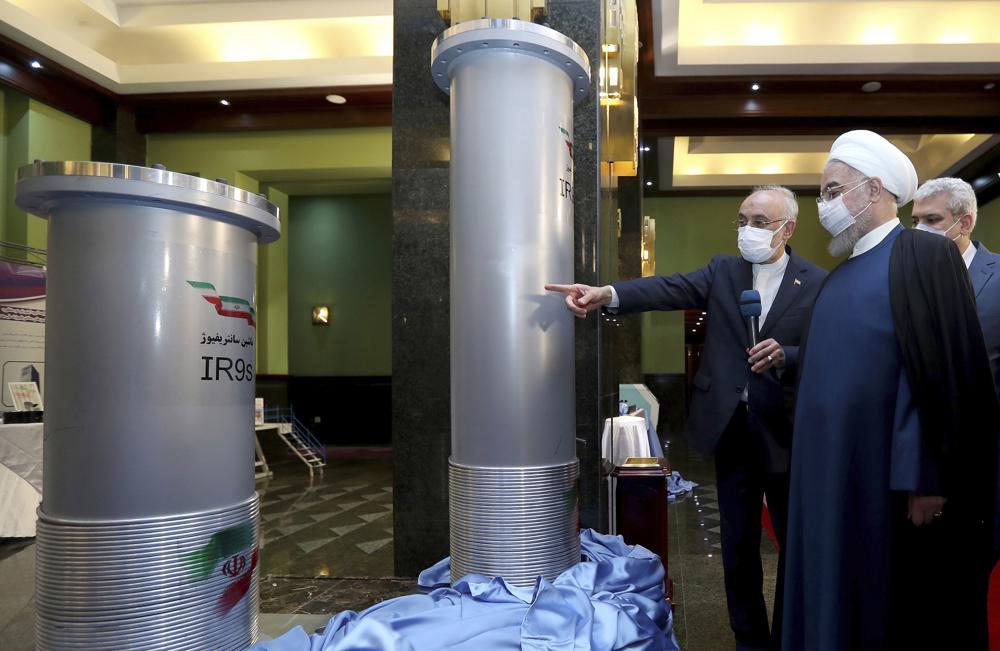Iran’s tattered nuclear deal with world powers hangs in the balance as the country prepares to vote on Friday for a new president and diplomats press on with efforts to get both the U.S. and Tehran to reenter the accord.
The deal represents the signature accomplishment of the relatively moderate President Hassan Rouhani’s eight years in office: suspending crushing sanctions in exchange for the strict monitoring and limiting of Iran’s uranium stockpile.
Advertisement
The deal’s collapse with President Donald Trump’s decision to unilaterally withdraw America from the agreement in 2018 spiraled into a series of attacks and confrontations across the wider Middle East. It also prompted Tehran to enrich uranium to the highest purity levels so far, just shy of weapons-grade levels.
With analysts and polling suggesting that a hardline candidate already targeted by US sanctions will win Friday’s vote, a return to the deal may be possible but it likely won’t lead to a further detente between Iran and the West.
“It’s certainly not as complex as drafting a deal from scratch, which is what the sides did that resulted in the 2015 deal,” said Henry Rome, a senior analyst focusing on Iran at the Eurasia Group. “But there’s still a lot of details that need to be worked out.”
He added: “I think there’s a lot of domestic politics that go into this and an interest from hard-liners, including the supreme leader, to ensure that their favored candidate wins without any significant disruptions to that process.”
The 2015 deal, which saw Iranians flood into the streets in celebration, marked a major turn after years of tensions between Iran and the West over Iran’s nuclear program. Tehran has long insisted that its program is for peaceful purposes. However, U.S. intelligence agencies and International Atomic Energy Agency say Iran pursued an organized nuclear weapons program up until 2003.
In order to ease the threat seen by the West, Iran agreed under the deal to limit its enrichment of uranium gas to just 3.67% purity, which can be used in nuclear power plants but is far below weapons-grade levels of 90%. It also put a hard cap on Iran’s uranium stockpile to just 300 kilograms (661 pounds). Tehran also committed to using only 5,060 of its first-generation centrifuges, the devices that spin the uranium gas to enrich it.
What the deal didn’t do, however, was involve Iran’s ballistic missile program or Tehran’s support of militant groups around the region — such as the Lebanese Hezbollah or the Palestinian Hamas — that the West and its allies have designated terrorist organizations. At the time, the Obama administration suggested further negotiations could spring from the deal. However, Trump entered the White House on a promise to “tear up” the accord in part over that, which he ultimately did in 2018.
In the time since, Iran has broken all the limits it agreed to under the deal. It now enriches small amounts of uranium up to 63% purity. It spins far-more advanced centrifuges. If Iran’s nuclear program remains unchecked, U.S. Secretary of State Antony Blinken has warned it could shrink Tehran’s “breakout” time down to “a matter of weeks.” That has worried nonproliferation experts.
In Friday’s presidential election in Iran, hard-line judiciary chief Ebrahim Raisi appears to be the front-runner. He’s already said he wants to return Iran to the nuclear deal to take advantage of its economic benefits. But given his previous belligerent statements toward the U.S., further cooperation with the West at the moment appears unlikely.











